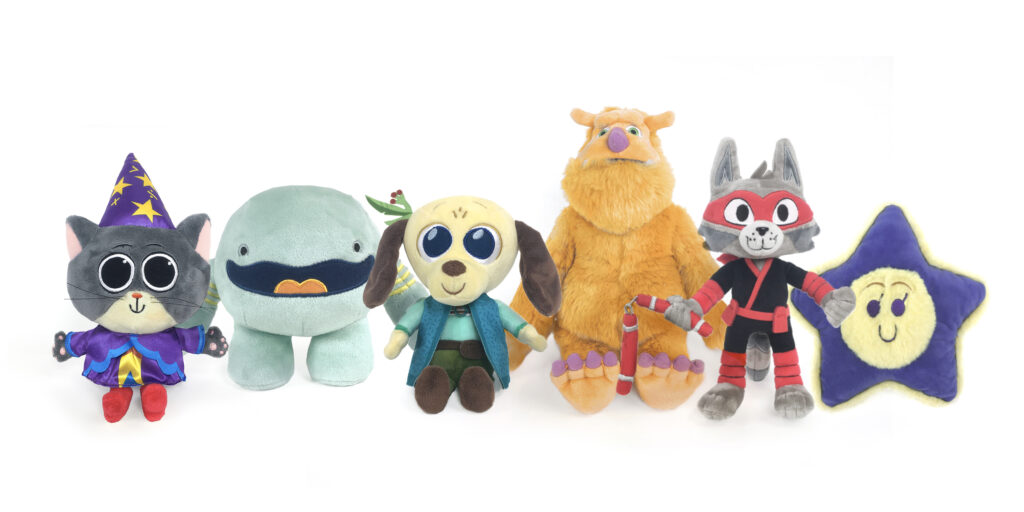
Osmo is an education company that combines hands-on play with digital experiences.
The goal for this project was to diversify the product offerings of Osmo while building off of our existing brand content. I was responsible for developing a 10+ plushie product line and creating a streamlined pipeline for producing future plushies.
Here are some examples of the digital characters (top row) transformed into plushies (bottom row):
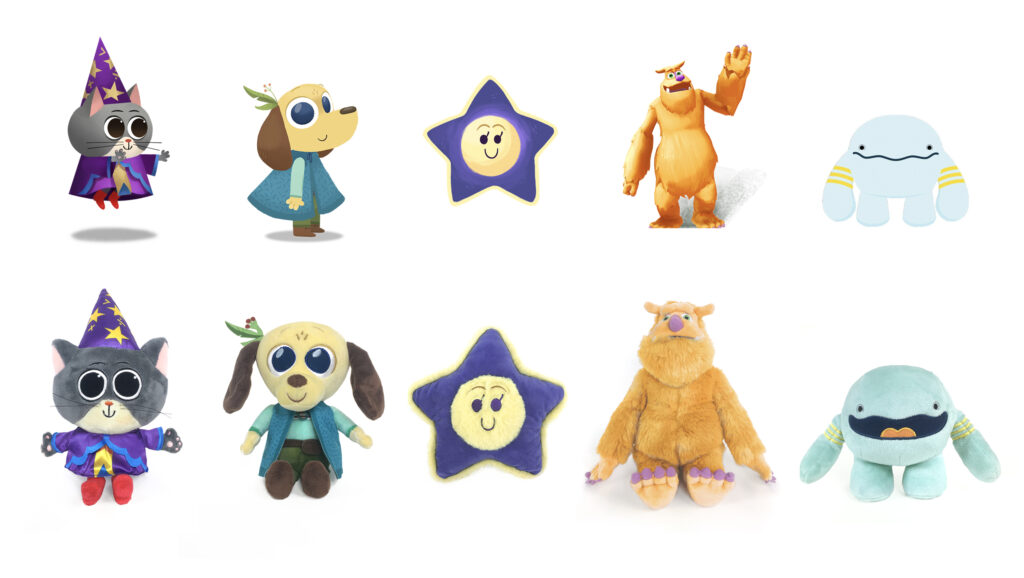
PROCESS
Brainstorming & Research
The characters for the plushie product line came from a variety of brands with different styles. I had to balance between keeping the accuracy of the original characters and creating a cohesive product line.
I started out by researching existing plushies on the market and organizing them into different categories. From there I did a quick cost analysis to see where our plushies would fit in the existing market.
Market research
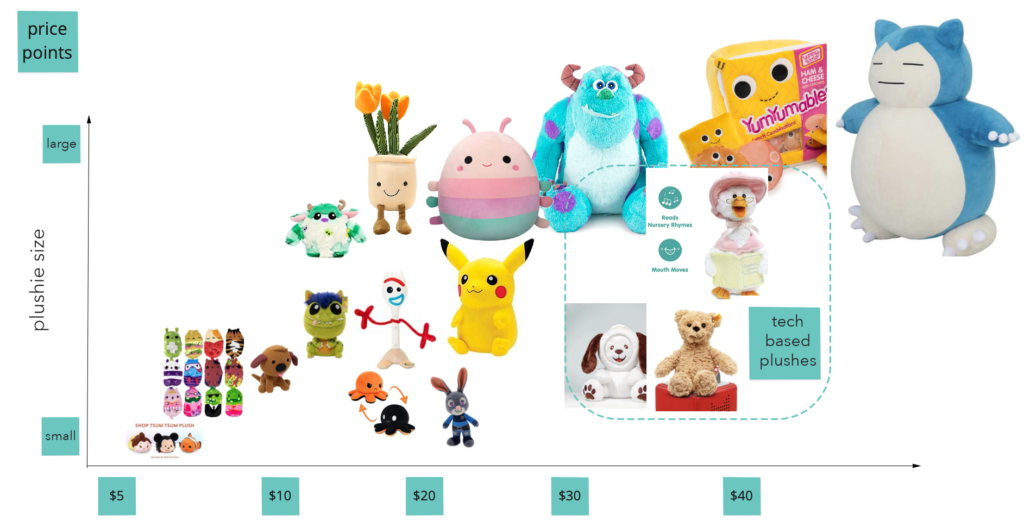
With a price point in mind, I researched and sampled plushes on the market to see what created a good quality plush. From there I pinpointed that the 3 biggest drivers of quality were: fabric texture, plush weight, and sewing construction.
Construction techniques
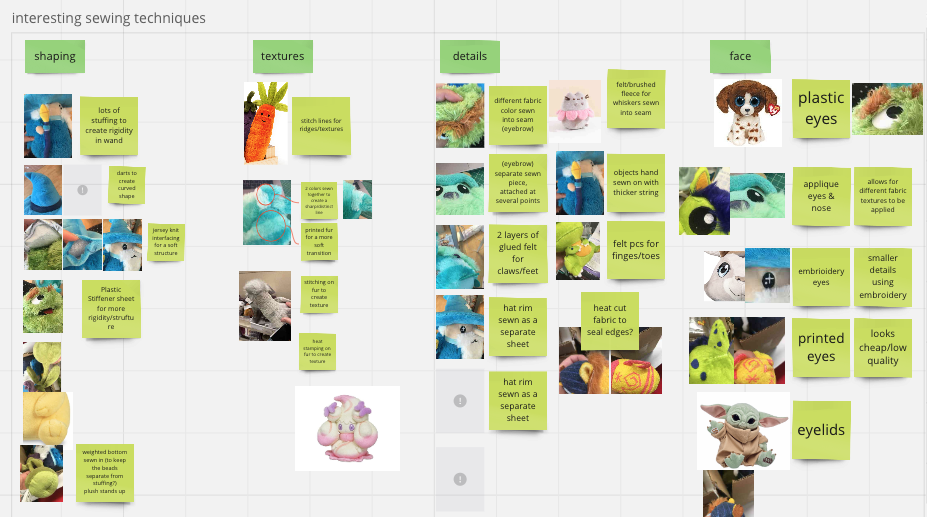
Product Specification:
After deciding on the cohesive design rules, sewing style, and materials for the plushies, I created a specification template that could be used to submitted to the vendors for quotes & feedback.
Specification deck
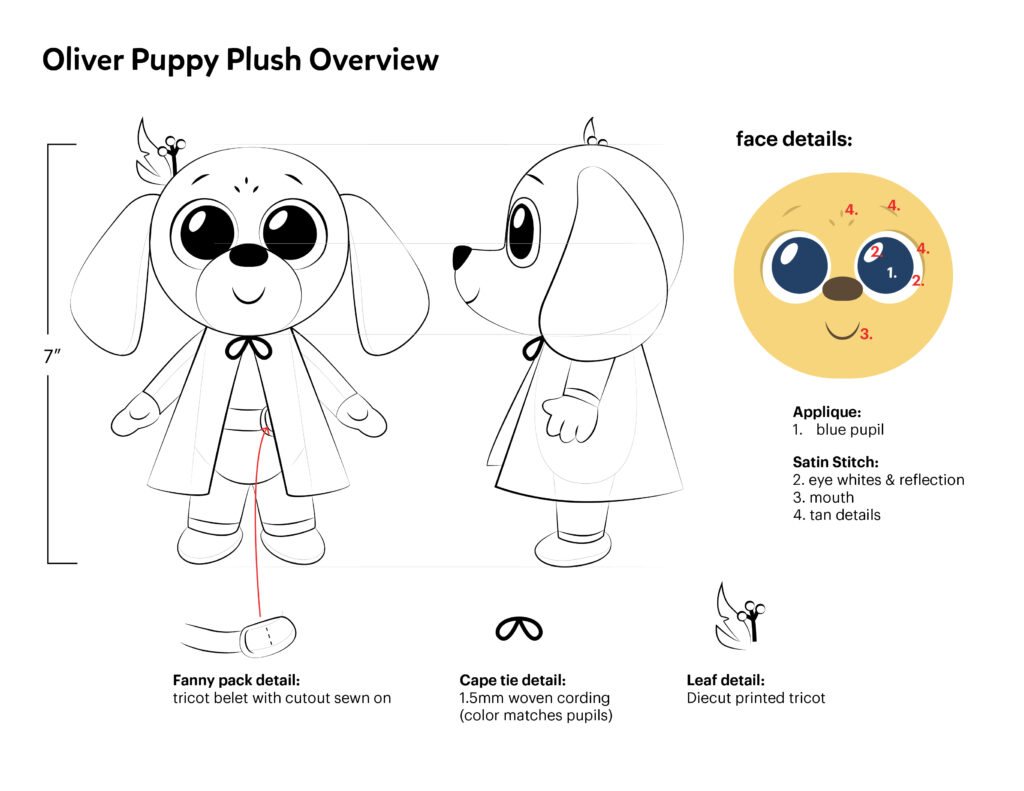
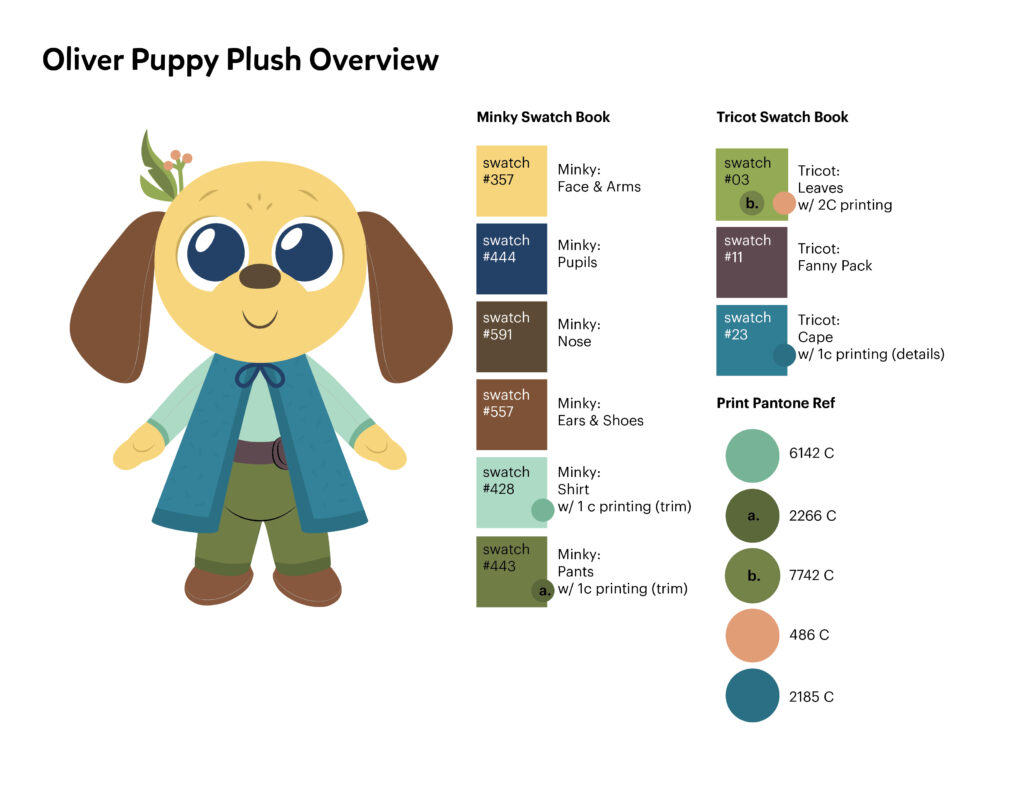

Product Sampling:
Since the characters were designed as 2D game assets, it was a challenge to translate them into 3d forms. Through several rounds of research and sampling, we were able to finalize the construction and materials.
Sample iteration
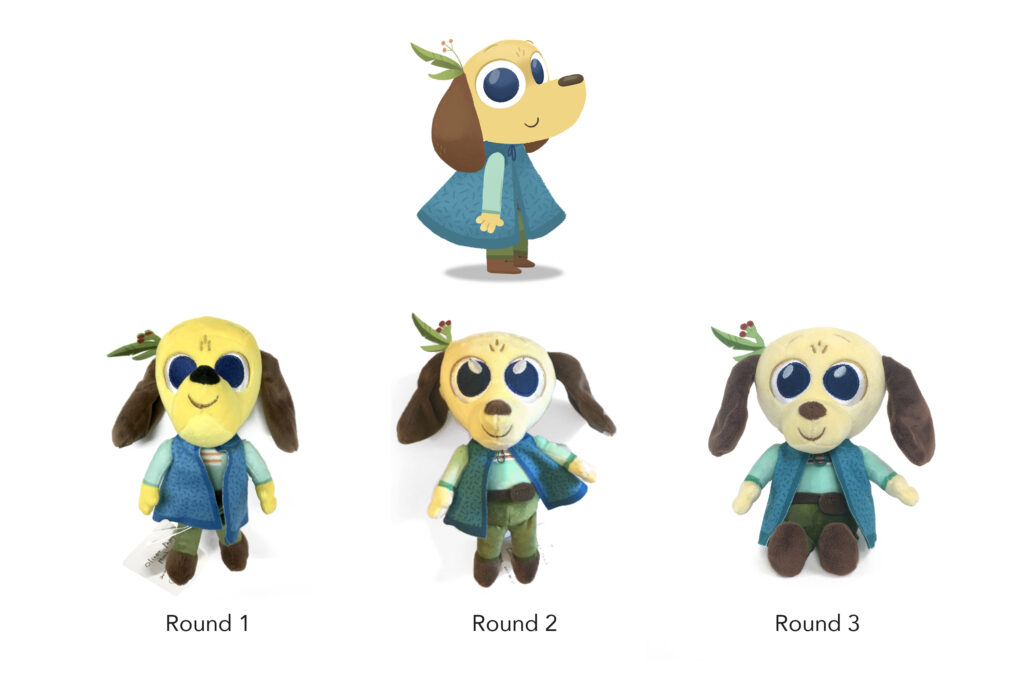
Product Proposal:
From there I developed a specification process & a timeline template to help us scale future plushie designs. Collaborating with the design team, I also created a launch proposal deck for the new product line.
The proposal highlighted how the new program would diversify our product offering, enhance customer engagement, and optimize our product margins. Some screenshots focusing on the online & retail sales below.
Online plushie sales web flow mockup
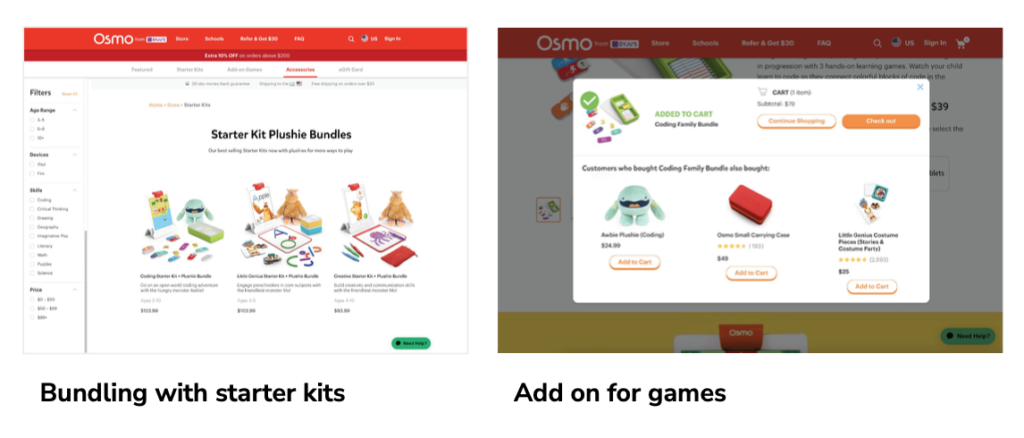
Retail drop palette & shelf display concept
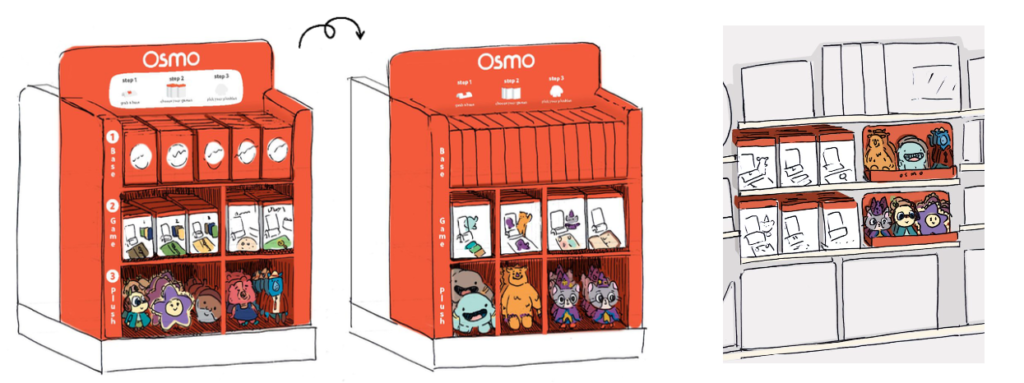
Summary
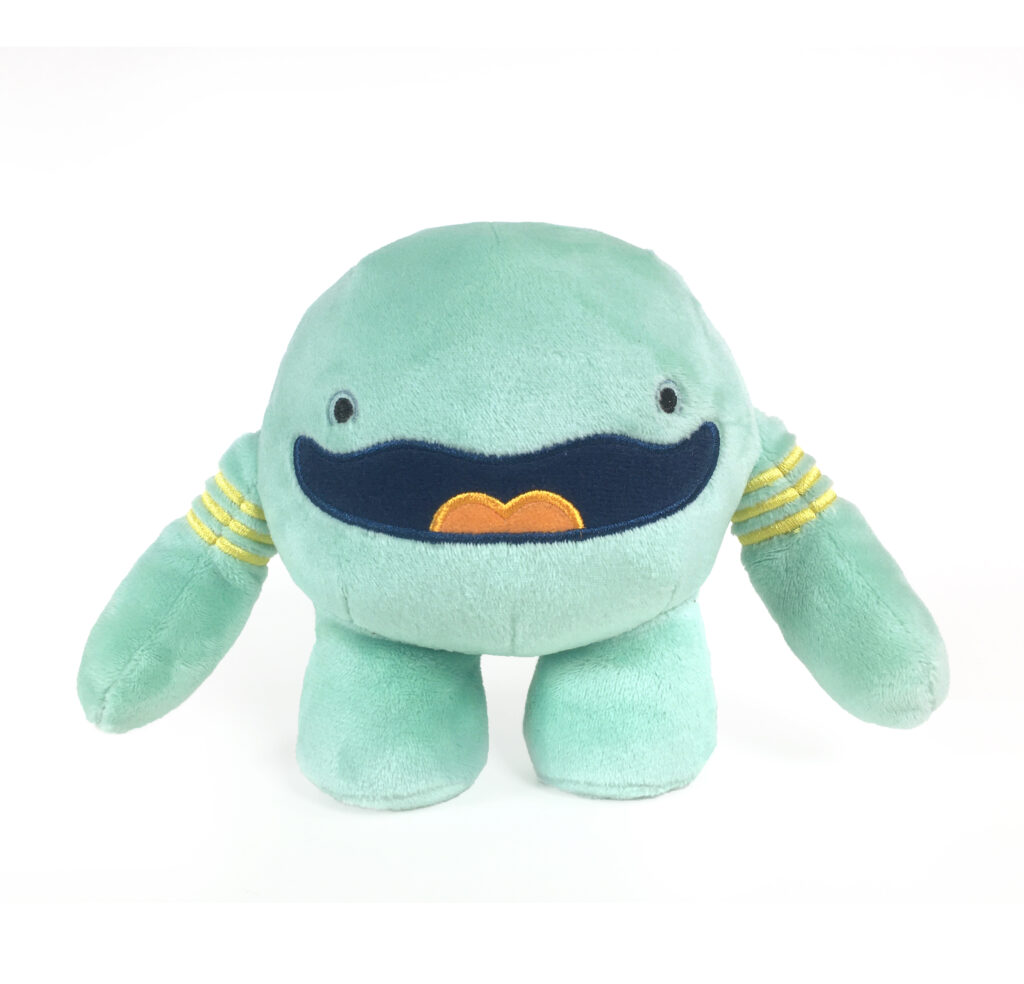

The goal for this project was to enter a new category that would diversify Osmo’s product offerings and revenue streams. As the designer on this project, I was responsible for creating a plushie brand identity and establishing a streamlined process for scalable design development. With the rest of the design team we created a proposal highlighting how the new product line would enhance customer engagement, improve margins, and drive revenue.